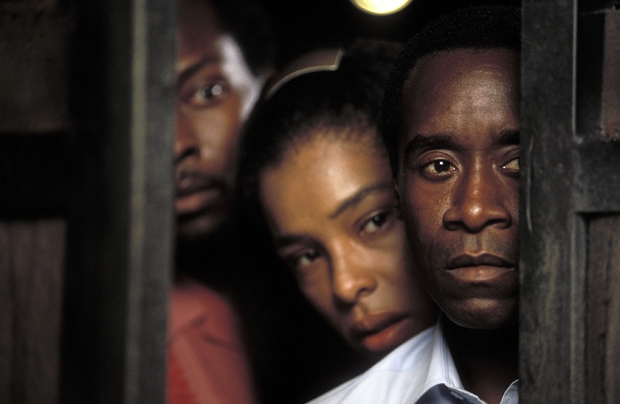Joyce Ashuntantang
Many film scholars and critics observe that in the post-apartheid era, Hollywood’s portrayal of Africa and Africans generally miss the mark, foregoing opportunities to teach us profound truths about the African continent and its people — all for the sake of popularity and profit. Here, one of those critics, Joyce Ashuntantang, looks at one prime example: How the film Hotel Rwanda ignored complexity and context in dealing with the 1994 Rwandan Genocide:
In recent years, Hollywood has produced films dubbed “human rights” films, like Hotel Rwanda (2004), The Constant Gardener (2005), Blood Diamond (2006), and Catch a Fire (2006). The appellation “human rights film” itself is debatable, since Hollywood movies must negotiate between presumed audience preferences and box office figures, Factors that in turn may trump the very rights the films are meant to uphold.
Despite Hotel Rwanda’s success in sparking debate about the politics of international human rights and the contradictions of national governments that claim to value those rights, Terry George’s representation of human rights in the film bears the marks of what is wrong not only with the human rights movement itself, but the way human rights are constructed and disseminated with reference to Africa. These include: the projection of the savage/victim/savior dialectic; the danger of assigning labels to victims and perpetrators; ignoring historical and cultural contexts of human rights abuses; and downplaying the severity of genocide in order to obtain maximum entertainment value for the film.
In Hotel Rwanda, the Tutsis are represented as victims and the Hutus as savages. Simplistically framing the conflict along the lines of “good guys/bad guys” does not help the cause of human rights, but refuels anger, reinforces polarizing dichotomies, and makes conflict-resolution difficult. In the midst of this victim/savage dichotomy is the metaphor of the savior compelled to come and rescue the victims. Hotel Rwanda castigates the non-arrival of the savior, but nonetheless the savior image is constructed through the western journalists and United Nations general, played by Nick Nolte.
Lack of complexity in certain aspects of the film grossly distorts the context — essential to understanding the genocide. Terry George provides short, vague snippets of the socio-politico context of the genocide between “suspenseful” scenes of Paul Rusesabagina’s many attempts to stop the “wild” Hutu interahamwe from gaining access to the Hotel Des Mille Collines. George’s choice of Rusesabagina as hero and the representation of one individual’s story of perseverance, unintentionally undermine the struggle of an entire nation. Not centralizing the historical context of the genocide in the film does a disservice to the audience.
Hotel Rwanda manipulates the cinema medium, transforms the image of the genocide to a Hollywood product, and creates the illusion that this medium can successfully interpret the genocide to the world. Though fictionalized, Hotel Rwanda is based on a true and graphically disturbing story. As a Hollywood film, it reaches millions of people who will arguably view the film as their historical source of record on this genocide. One cannot deny that the question of accuracy will always plague any film that purports to be historical, but a film paraded as a human rights film must be sensitive to facts, for by not representing the facts objectively, the film perpetrates anger and resentment.
A good film alternative:
A film that more objectively represents the Rwandan Genocide is Raoul Peck’s Sometimes in April. Peck’s film takes colonialism into account in his re-telling of the Genocide. He also refrains from demonizing any groups of people.
Joyce Ashuntantang is a professional actress and assistant professor of English/Literature at Hillyer College-University of Hartford, and an associate to the UNESCO Chair and Institute for comparative Human Rights at the University of Connecticut. She contributed to the forthcoming MaryEllen Higgins-edited volume Hollywood’s Africa After 1994.
This story is part of Worldview’s occasional series Images, Movies and Race, produced in conjunction with WBEZ’s Race: Out Loud series. Read more on film contributor Milos Stehlik’s conversations with filmmaker Jill Godmilow and author/scholar MaryEllen Higgins about how modern Hollywood films on Africa hide racist overtones within heroic, feel-good stories.
See online: Africa-themed films like ’Hotel Rwanda’ fail to give full historical context

